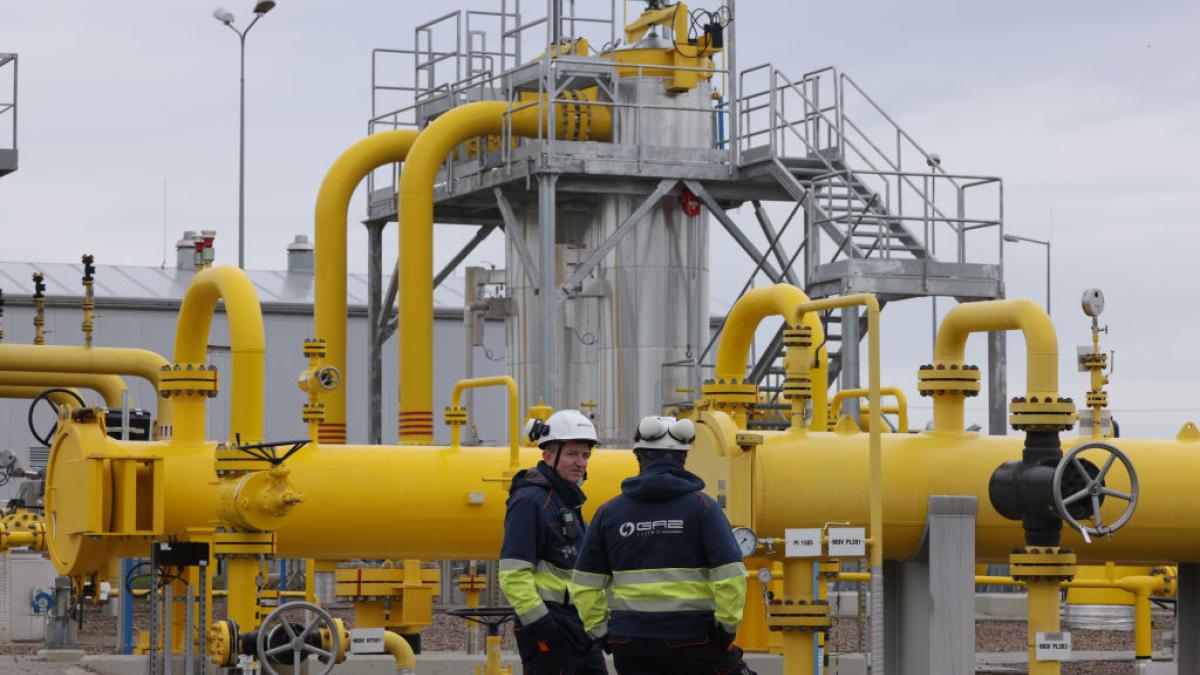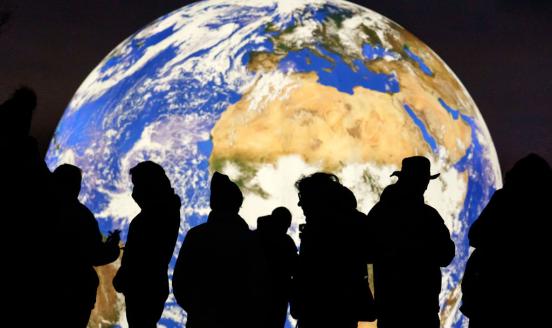The European Union is ready for the 2023-24 winter gas season
Demand cuts, alternative supply and the green energy rollout mean the EU likely has enough gas for winter, even if Russian supplies are cut completely

Though in the wake of Russia’s invasion of Ukraine, winter 2022-23 was the most challenging ever for Europe’s natural gas grid (ACER, 2023), the European Union is reasonably well-prepared for the coming winter. Today’s fundamentals are solid. In the first two quarters of 2023 gas demand met the EU target of a 15 percent reduction below historic averages (McWilliams and Zachmann, 2023a), while liquefied natural gas import capacity has been expanded by 20 percent (Sgaravatti et al, 2022) and the global LNG market remains well supplied partly thanks to the lack of significant demand growth in China. The EU met its 90 percent gas storage target two months ahead of a deadline in November, with traders now sending excess gas to be stored in Ukraine undefined See McWilliams et al (2023a) and McWilliams and Zachmann (2023b) for a discussion of gas storage in Ukraine. .
The EU has also seen accelerated deployment of solar PV, wind power and heat pumps, which slowly but structurally contribute to lower dependence on gas. The combination of all these factors is reflected in tamed prices, with the day-ahead gas price at time of writing far below what it was around this time a year ago (€45/megawatt hour versus €170/MWh).
Notwithstanding these developments, Europeans should not be complacent. Fears about gas shortages or power cuts have receded, but a gas price that is persistently higher than in other markets and ongoing price volatility could still have repercussions for the EU industrial structure and economy undefined See McWilliams et al (2023a) and McWilliams and Zachmann (2023b) for a discussion of gas storage in Ukraine. . For example, strikes at Australian LNG facilities marginally impacted European gas prices even though Europe imports no Australian gas. Maintenance works at the Nyhanma plant in Norway – now the EU’s largest pipeline supplier – have also caused market jitters. Until more LNG liquefaction capacity comes online, the global LNG market, and consequently the EU gas market, will remain tight. Fortunately, more liquefaction capacity is expected in 2024; in the US alone, 336 terawatt hours/year is expected to come online, corresponding to about twice the EU’s yearly LNG imports from Russia.
How the EU managed until now
The two main elements in the EU’s management of the dramatic drop in Russian gas in the last two years are an increase in LNG imports and sustained gas demand reduction. The LNG share of total gas imports doubled, from 20 percent in 2018-2019 to 40 percent in the 12 months from August 2022 to July 2023. This was largely driven by imports from the US (LNG imports increased sixfold from 100 TWh to 600 TWh). Russian LNG imports have also increased, but this has nowhere near compensated for the drop in pipeline imports (Figures 1 and 2).
Gas demand, meanwhile, was 12 percent lower in 2022 than the 2019-2021 average, driven by falling industrial and household gas demand. In 2023, the greater availability of alternative power generation facilitated significant gas demand reduction also in the power sector (see the annex). In the second quarter of 2023, gas demand was 19 percent below the 2019-21 average, with gas demand for power generation 17 percent down.
A relatively warm winter helped reduce household gas demand. It is very difficult to isolate and attribute demand reductions to temperature because of the range of unusual circumstances occurring at the same time. However, using linear regression analysis, we link 35 percent of the EU reduction in gas demand during winter 2022-23 to warmer weather. There is significant variation by country, with about 20 percent of the reduction in Germany driven by weather, and about 60 percent in France. Global warming of course increases the likelihood that each winter is now warmer than the previous ten-year average.
Figure 2 compares the components of the EU ‘gas balance’ (supply minus demand) during the 12 months from August 2022 to July 2023 with a non-crisis period (three years earlier, 2019-2020). Gas demand dropped by 767 TWh, almost twice the increase in imported LNG.
How well prepared is the EU for the coming winter?
If the EU ends the winter with at least 30 percent of gas still in storage, it can be considered as ending the winter without serious security-of-supply threats. Two main risks to the EU gas balance can be evaluated. The first is an immediate end to all remaining Russian gas imports (LNG and pipeline) as of 1 October, and the second is a scenario in which this happens alongside a particularly cold winter (equivalent to the coldest winter in Europe in the last ten years), which increases demand by 12 percent (estimated using a linear regression on historic daily data).
Figure 3 shows that current storage levels put the EU in a safe position. In the worst-case scenario, the EU would end up with storage sites at above 20 percent of capacity by 1 April 2024, while in the eventuality of no Russian imports and gas demand similar to that in 2022, the EU would be well above 40 percent of storage capacity.
These estimates are conservative as they do not account for a price-induced readjustment of supply and demand, ie if prices are higher than last winter, the EU will attract more LNG and/or reduce demand. Other factors suggest the potential for gas demand to be structurally lower than last year. The return of several French nuclear plants after extraordinary maintenance, and the increased deployment of solar, wind and heat pumps will reduce gas demand for power generation. The record number of heat pumps installed by households in 2022 will reduce gas demand for heating. We estimate that the combination of these elements will result in a 3.3 percent reduction compared to last year’s winter demand, equivalent to 74 TWh.
Table 1: Year-on-year potential gas savings from EU energy market changes
|
|
Gas saving potential |
|
|
|
TWh |
% of 22/23 winter demand |
|
French nuclear plants back online |
33 |
1.5 |
|
German nuclear plant closure |
-17 |
-0.7 |
|
40 GW solar PV deployed |
29 |
1.3 |
|
16 GW wind deployed |
19 |
0.9 |
|
3 million heat pumps installed |
9 |
0.4 |
|
Total |
74 |
3.3 |
Source: Bruegel.
Though the EU likely does not face substantial supply risks this winter, the ongoing impacts of gas disruption will continue to be felt through higher prices. While wholesale gas prices have decreased substantially, the prices that households and many businesses actually pay remain elevated because of a time lag in adjustment of retail contracts to wholesale prices. The consequence is that demand reduction will be encouraged, but households and businesses will continue to face elevated prices.
Regional variations
While some countries have ended all dependence on Russian gas, others continue to import. Figure 5 decomposes gas consumption by EU country by supply source, including reliance on the three remaining Russian import routes (the Ukraine Transit and Turkstream pipelines, and Russian LNG). While in 2021-22, infrastructure bottlenecks were a defining feature of Europe’s energy crisis, this is no longer the case thanks to the construction of new pipelines and LNG import terminals. High storage volumes and structurally lower demand have relaxed the European market, allowing for demand on a given day to be met by a suitable combination of traded and stored gas. Consequently, any disruptions to individual trade flows will this year be more readily compensated for by adjustments in intra-EU trade, with gas flowing to areas of need.
Russian LNG
The Iberian Peninsula is the region most exposed should Russian LNG be halted abruptly, because of its high share of LNG in final gas supply, and a relatively high share for Russia in providing those LNG imports. The Iberian Peninsula is also not well connected to the wider European gas grid.
In the first quarter of 2023, Russian LNG made up 20 percent of total natural gas imports to Spain and Portugal. If all Russian LNG imports to the region were to end and nothing else changed, gas storage would run dry by January 2024 (McWilliams et al, 2023b). In practice, alternative cargoes would be sought on international markets. Depending on wider dynamics, this might be offset by increased availability of Russian LNG (ie like the oil embargo, when Russian oil stopped flowing to the EU, it flowed to India and China instead). We estimate that by replacing 50 percent of Russian cargoes, Spain and Portugal would manage the winter well, and we consider this feasible given the status of the global LNG market.
Russian pipeline: Ukraine Transit and Turksteam
Austria, Slovakia, Slovenia, Hungary and Croatia would face the largest estimated direct impacts from a disruption to the Russian gas that transits Ukraine (Figure 5). Italy would face some impact, but not substantial.
Together, these directly impacted countries currently have more gas in storage (200 TWh) than they consumed in total during the 2022-23 winter (166 TWh). Hypothetically, the region has enough gas in storage to manage the winter alone even if all trade links were severed. In practice, these high storage volumes mean that any disruption to Russian imports would not be felt in isolation by these countries, but distributed around the European grid. Bottlenecks in supply should not materialise as a combination of meeting daily demand using storage reserves and intra-EU trade would suffice.
Furthermore, in recent weeks, European traders have begun storing gas in Ukrainian gas storage facilities. These supplies are directly connected to the same pipeline system through which Russian gas transits, and are a good buffer in case of any reduction in Russian flows. Traders serving the EU market have so far stored about 20 TWh of gas in Ukraine undefined See McWilliams et al (2023a) and McWilliams and Zachmann (2023b) for a discussion of gas storage in Ukraine. . Russian transit flows through Ukraine are in the order of 10 TWh/month, meaning that about 2 months of the interruption in flows from Russia could be compensated by drawing on gas put in UA storage and connected to the same pipelines.
Hungary and Serbia are most reliant on the Turkstream pipeline. These flows are the least likely to be interrupted, given that Hungary has maintained closer relationships with Russia and Gazprom than other EU countries. Hungary has even signed an extension on its deal for purchasing Russian gas since the invasion of Ukraine. In any case, Hungary currently has a greater volume of gas stored than its total winter demand, implying the country would manage a Russian cut-off.
Conclusions
The market outlook for the upcoming winter season in the EU looks positive. The steps taken to diversify gas imports, expand LNG regassification capacity and deploy renewable energy put the EU in a much better position to navigate shocks in the gas market than in 2021 and last year. However, maintaining current gas demand reduction remains critical. Governments should stand ready to act if there are reversals in consumption trends (and policies that increase gas demand, such as subsidies, should be avoided).
Europe's energy security during the winter also hinges on the integrity of its pipeline and LNG infrastructure. Sabotage or disruptions could have severe consequences. It is hence crucial to maintain a high level of alertness and security to safeguard these critical supply routes. Lastly, the impact of soaring gas and electricity prices on various industries calls for a careful and considered response.



